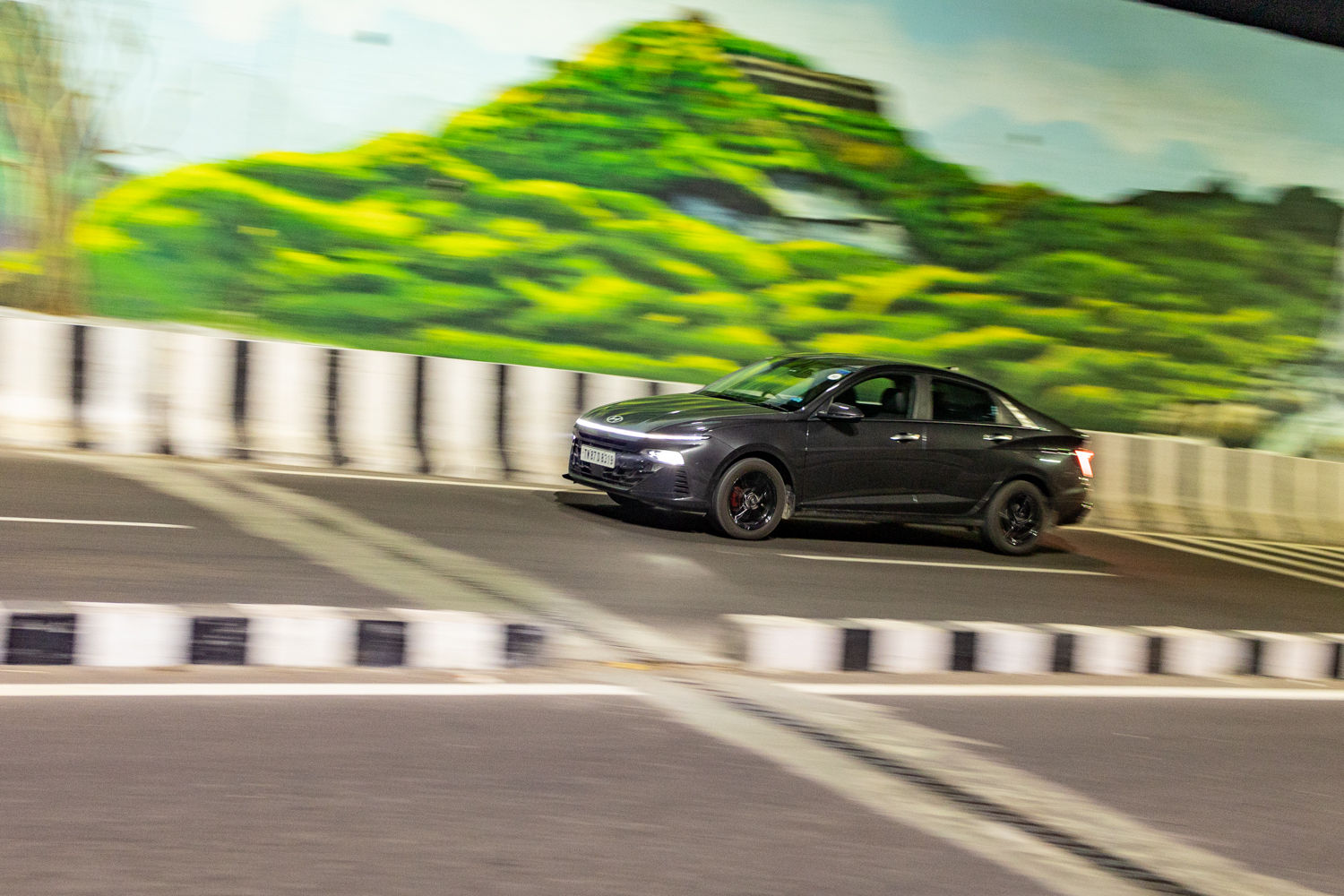Hyundai Verna Turbo-Petrol MT - Long Term Report (2,300 km Update)
Published On Feb 25, 2024 By Sonny for Hyundai Verna
- 6.3K Views
- Write a comment
The Verna is starting to show its true potential, but raises some questions about the feature package

The top-spec manual option of the Hyundai Verna has now been part of the office garage for almost two months, during which it has done a fair mix of city commuting and a couple of extended trips on the highway.
A Quirky Tech Fest
One of the main advantages the Verna promises over the segment competition is its extensive list of tech features which do make for a nice and modern cabin experience. But for almost every good feature, there's a quirky downside which only becomes noticeable as you live with the sedan.
No Wireless Connectivity
That 10.25-inch touchscreen infotainment works really well and even the built-in navigation system can help you find your way with ease. The cabin looks especially cool at night with that strip of ambient lighting. While you can use Android Auto or Apple CarPlay, it only works with a cable. More confusing still, is that Hyundai has only given the old-school USB port for it. There is a USB Type-C port in the central console but that's ONLY for charging. It all gets a bit more frustrating when you realise there's no ideal place to keep your phone once you have it plugged in. Your best option is to place the wired phone in one of your cup holders.


Switchable Control Panel - Who’s It For?
Another cool feature of the new Verna is the switchable touch control panel for the AC and media. You can switch between those functions with the press of a button. A more premium version of this can be found in the likes of the Kia EV6. But this feature is almost entirely meant to be used by the front passenger, since the driver has all the relevant media controls on the steering wheel where they’re less distracting as well. Even then, thanks to the large and nice-to-use touchscreen, your passenger is more likely to just use that instead of switching between AC and media controls further down the dashboard.


One Camera
The Verna gets front and rear parking sensors but only a rearview camera. It even comes with advanced driver assistance systems (ADAS) for enhanced safety. I did find the blind spot monitoring system and the sensors quite useful, but I wish Hyundai had offered at least one more camera view, given that many similarly priced alternatives (SUVs) come with a 360-degree camera, or at least a blind-view camera under the left ORVM (Honda City).

Dramatic ADAS
I also take issue with the collision warning system. While it does add to my peace of mind, the system needs to be fine-tuned. More than a few times, it has applied the brakes quite aggressively even when there was no immediate threat of a collision, often triggered by the proximity of two-wheelers that are either cutting in front of you or not slowing down to let you reverse out of parking. You can switch the system off entirely if you choose, but then it wouldn’t make sense to pick the top variant that offers this technology, would it?

At Home On The Highways
In my first few days with the turbo-petrol Verna, I brought up the topic of fuel consumption (under 10 kmpl on average) in this manual transmission guise. However, the 1.5-litre turbo-petrol engine has surprised me since, especially on long highway cruises. Driving in the ‘Normal’ mode, at 100 kmph in sixth gear, I was easily able to see an active efficiency figure of just over 20 kmpl on the semi-digital instrument cluster. Even in the city, by shifting at lower revs, I was able to get upto 12 kmpl, which is a big improvement from the previous best of 9.7 kmpl.


The Hyundai sedan felt most at home on the highway, as the suspension smoothes out most undulations and joints in the road. Of course, drive over any pothole at that speed and you do feel the thud all the way through to your spine. It picks up speed quite easily for making overtakes and you will certainly be exceeding speed limits before you make the Verna feel unsettled.

While the ADAS kit of this manual variant misses out on adaptive cruise control and lane departure assist, the combination of regular cruise control with lane keep assist (LKA) makes it easy to keep driving for hours. The LKA is able to navigate the wide corners of a main highway by following the lane markings on the road. It reminds you to not leave your hands off the wheel for too long, but even those short intervals are good enough to give your arms a rest.

Over the next month, the Verna will be doing more commuting and some heavy lifting with a shift on the cards. Stay tuned to find out just how practical the Hyundai sedan can be.
Positives: Impressive mileage on highway, useful driver assists
Negatives: Lack of wireless Android Auto and Apple CarPlay, just one camera view
Date when received: December 17, 2023
Kms when received: 9,819 km
Kms till date: 12,125 km (2,306 km driven)
